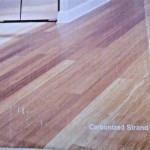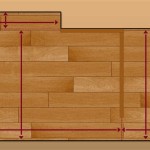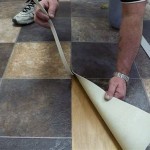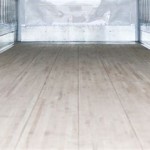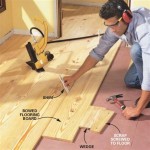Gray Spots on Hardwood Floor After Cleaning: Causes and Solutions
Hardwood floors are a desirable flooring option valued for their aesthetic appeal and durability. However, even with proper care, discoloration can occur. One common issue is the appearance of gray spots on hardwood floors, often noticed after cleaning. Understanding the causes of these spots and implementing appropriate remedies is important for maintaining the floor's appearance and longevity.
Identifying the underlying reason for gray spots is the first step towards effective treatment. The color change indicates a reaction or alteration within the wood or its finish. Ignoring these spots can lead to further damage and potentially costly repairs or even floor replacement.
Excess Moisture Exposure
One of the primary culprits behind gray spots is excessive exposure to moisture. Hardwood, by its nature, is porous and susceptible to water absorption. When cleaning, using too much water or failing to properly dry the floor afterward can create a favorable environment for moisture penetration. This moisture can then interact with the wood or its finish, causing discoloration.
The type of cleaning method employed also plays a role. For example, steam mops, while effective for cleaning, can introduce excessive moisture into the wood, particularly if used frequently or for prolonged periods. Similarly, using a wet mop without wringing it out sufficiently can leave standing water on the floor surface, increasing the risk of water absorption and subsequent gray spots.
Furthermore, improperly sealed floors are more vulnerable. If the protective finish is compromised due to wear and tear or damage, water can more easily penetrate the wood fibers. This is particularly problematic in areas with high humidity or frequent spills. Older floors often have degraded finishes, making them particularly susceptible.
The interaction of water and certain cleaning solutions can also contribute to the problem. Some cleaning products contain chemicals that, when combined with water, can react with the wood finish, leading to discoloration. This is especially true for floors with oil-based finishes, which can be sensitive to certain cleaning agents.
To mitigate moisture-related gray spots, it is essential to use cleaning methods that minimize water usage. When mopping, wring out the mop thoroughly to ensure it is damp rather than wet. Additionally, using a microfiber mop can help absorb excess water. Ensuring the floor is well-ventilated after cleaning can also aid in drying and prevent moisture buildup. Regularly inspecting the floor's finish for damage and addressing any issues promptly can prevent water from penetrating the wood. Finally, always use cleaning products specifically designed for hardwood floors, and follow the manufacturer's instructions carefully.
Finish Damage and Wear
The floor's finish acts as a protective barrier, shielding the wood from moisture, scratches, and other forms of damage. Over time, this finish can wear down due to foot traffic, furniture movement, and general use. Once the finish is compromised, the underlying wood becomes more vulnerable to staining and discoloration.
Gray spots appearing after cleaning can often indicate that the cleaning process has further exposed the damaged wood. The cleaning solution, coupled with the scrubbing action, may remove the remaining finish in those localized areas, revealing the unfinished wood beneath. This exposed wood is then more susceptible to absorbing water and cleaning agents, resulting in gray discoloration.
Scratches and abrasions, even seemingly minor ones, can create entry points for moisture and cleaning solutions. These small imperfections can allow liquids to seep beneath the finish and interact with the wood, leading to staining and discoloration. The discoloration tends to be more noticeable after cleaning as the water further penetrates the damaged areas.
The type of finish applied to the floor also influences its susceptibility to damage. Surface finishes, such as polyurethane, create a protective layer on top of the wood, while penetrating finishes, such as oil-based finishes, soak into the wood fibers. Surface finishes are more prone to scratching and chipping, which can then expose the wood. Penetrating finishes, while more resistant to surface damage, can be more susceptible to water damage if not properly maintained.
To prevent finish-related gray spots, regular maintenance is key. This includes using floor protectors under furniture legs, sweeping or vacuuming regularly to remove dirt and debris that can scratch the finish, and avoiding the use of abrasive cleaning pads or harsh chemicals. When cleaning, use a pH-neutral cleaner specifically designed for hardwood floors. Periodically reapplying a maintenance coat of finish can help protect the existing finish and prevent damage to the underlying wood. If the finish is severely damaged, refinishing the entire floor may be necessary to restore its protective barrier and appearance.
Reaction with Cleaning Agents
The chemical composition of cleaning products can significantly impact hardwood floors. Some cleaning agents contain harsh chemicals that can react with the wood or its finish, leading to discoloration, including gray spots. It is important to choose cleaning products specifically formulated for hardwood floors to minimize the risk of adverse reactions.
Ammonia-based cleaners, for example, are highly alkaline and can strip the finish from hardwood floors, leaving them vulnerable to damage. Bleach, another harsh chemical, can also cause discoloration and damage the wood fibers. Even seemingly mild detergents can cause problems if they contain ingredients that react negatively with the finish.
The pH level of cleaning products is a critical factor. Hardwood floors generally benefit from pH-neutral cleaners, which are less likely to cause damage or discoloration. Acidic cleaners can etch the finish, while alkaline cleaners can dull it. Checking the pH level of a cleaning product before use is a good practice.
The combination of different cleaning products can also lead to unexpected reactions. For instance, mixing ammonia-based cleaners with bleach can create dangerous fumes and damage the floor. Similarly, using a cleaning product after applying a wax or polish can result in a cloudy or discolored residue.
To avoid cleaning-agent-related gray spots, always read the labels of cleaning products carefully and follow the manufacturer's instructions. Test the cleaner on an inconspicuous area of the floor before applying it to the entire surface. Avoid using harsh chemicals or abrasive cleaners. Opt for pH-neutral cleaners specifically designed for hardwood floors. Rinse the floor thoroughly with clean water after cleaning to remove any residue from the cleaning agent. Furthermore, be wary of homemade cleaning solutions, as their chemical composition may not be suitable for hardwood floors.
When gray spots appear after cleaning, it is crucial to identify the cause and address it promptly. If the spots are due to moisture, ensure the floor is thoroughly dried and consider improving ventilation. If the finish is damaged, repair or refinish the affected area. If the spots are caused by a reaction with a cleaning agent, switch to a more appropriate cleaner and consider neutralizing the residue. Addressing these issues promptly can help prevent further damage and maintain the beauty of the hardwood floor.

Cleaning Laminate Which Has Some White Patch Hometalk

Hardwood Floor Repair In Portland Or

Steam Cleaning A Wood Floor Recipe For Disaster Rosebud Floors

How To Fix Gray Spots On Hardwood Floors Countyoffice Org

How To Clean Mysterious White Marks From Laminate Flooring Hometalk

What Would You Tell Her Tiktok K L E A N Dirty Hardwood Wood Floor Question Tips

Post Renovation Floor Cleaning Made Easy What You Need To Know Deep Formaldehyde Removal Specialist Vinyl Guards

8 Ways To Fix Scratches On A Laminate Floor Mersey Flooring

How To Clean Mysterious White Marks From Laminate Flooring Hometalk

Can I Save This Wood Floor The Hardwood Flooring Experts Petes Floors
Related Posts

